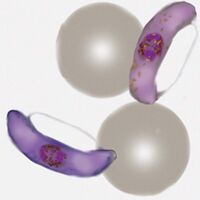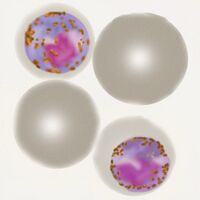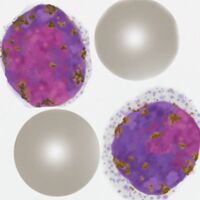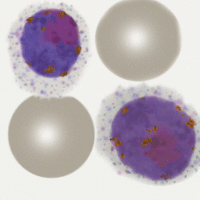Biology of the gametocyte
From haematologyetc.co.uk
Navigation
(click blue highlighted text to return to page)
Malaria main index
>Malaria biology
| The gametocyte pathway |
The gametocyte is the committed sexual form of the malarial parasite. Gametocytes have either male or female form (a higher percentage are female). However this form should probably be considered as “dormant” in blood, since they do not develop further until ingested by a mosquito - following a temperature drop in the mosquito foregut the gametocytes then rapidly form the active sexual form – either a single female gamete or 8 male gametes (see section on re-infection of the mosquito).
Generally male gametocytes (microgametocytes) are smaller then the female form (macrogametocytes). This is shown in the image below:
Frequency large vs small 1. P.malariae just a question of scale 2. P.falciparum neatly shown by red cell
| Morphological features and relevance |
(1) P.falciparum – typically elongated or “banana” shaped forms
(2) P.malariae – typically small and neat rounded forms
(3) P.vivax – typically very large and often irregular
(4) P.ovale – typically sightly enlarged and may be fimbriated
→ Click for the clinical gametocyte gallery
| Relevance of gametocytes to clinical biology |
Following treatment of malaria these forms may persist (depending on the nature of the treatment) particularly in the first week but sometimes up to 28 days (unlike the asexual forms that generally disappear more rapidly).



